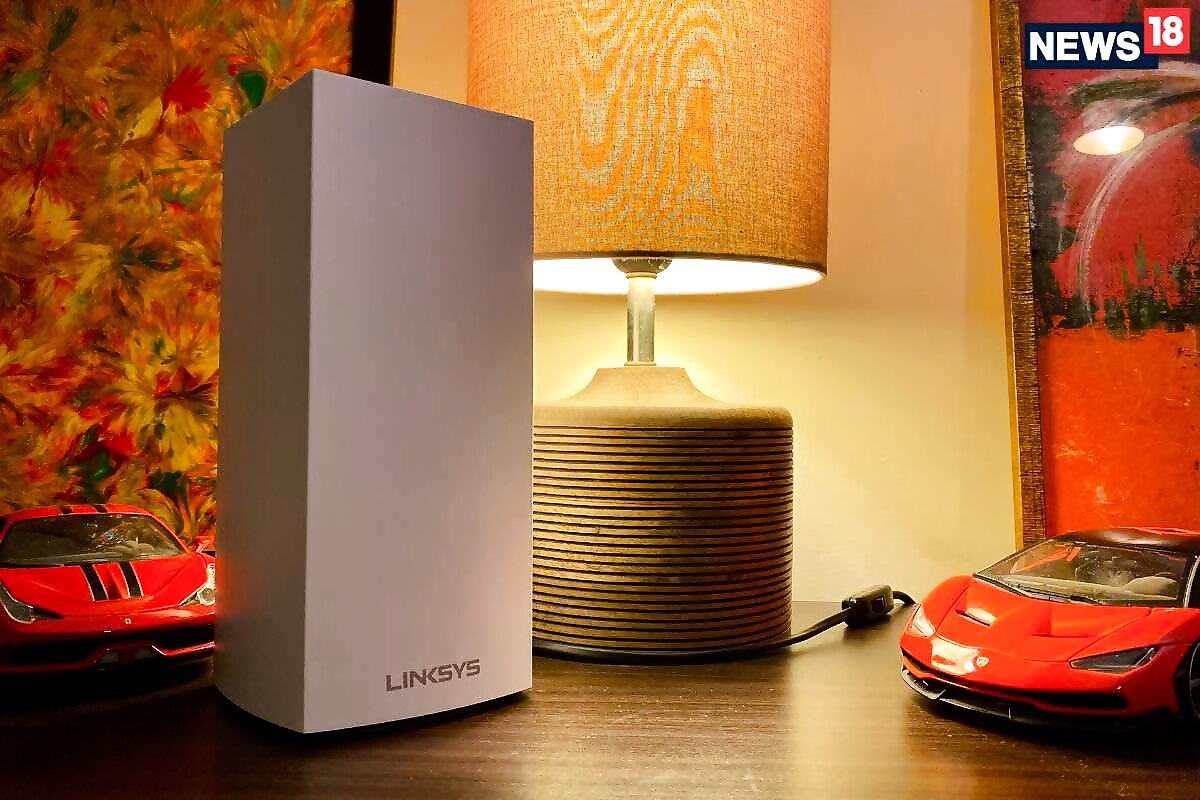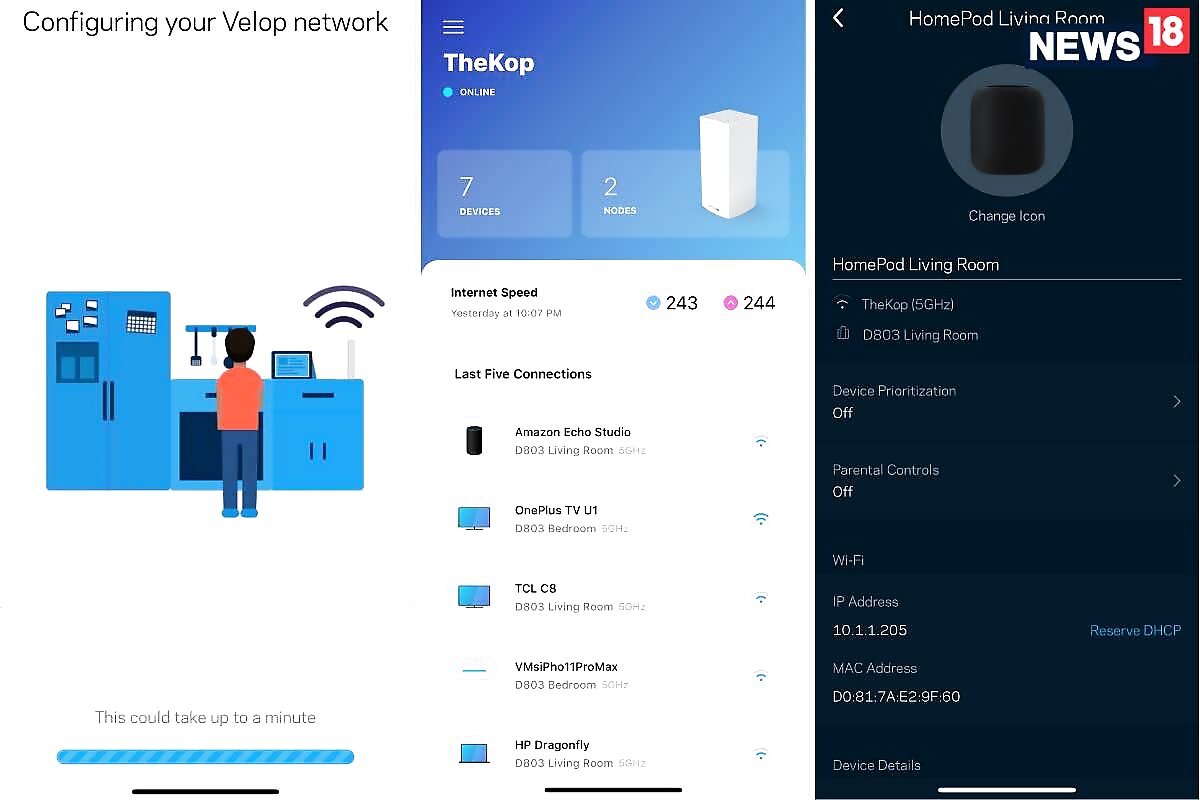
views
Every once in a while, along comes a new gadget or piece of tech for review, which is all about cutting edge tech, delivers on what it claims and does it better than its rivals while at it. Yet, you have to somehow factor in the premium you must pay for early adoption. And still, it is not a case of simple black and white. There are contours, situational changes and the future proofing that you need to keep in mind. We all know that a Wi-Fi Mesh system for homes is one of those things that you must get, in case you have spotty or very low Wi-Fi coverage in some parts of your home. Particularly in this day and age when work from home is of paramount importance. A lot is happening with Wi-Fi 6 too—the new Wi-Fi generation and a standard that succeeds 802.11ac with the 802.11ax standard. If you have the hardware for this, everything just becomes a bit better. Or does it? That is where the Linksys Velop MX5300 Wi-Fi Mesh comes into the picture.
Chances are, you may not have realized that you probably own a Wi-Fi 6 capable device. You just don’t know it yet. The HP Elite Dragonfly laptop, the Lenovo Legion 7i laptop, the Apple iPhone 11 series, the Samsung Galaxy Note20 and the Samsung Galaxy Note20 Ultra, Samsung Galaxy Tab S7 series, the OnePlus 8 Pro and the OnePlus 8, the Asus ExpertBook laptop and the Dell XPS laptops are just some examples. Like I said, these are just some examples. There are many more in the world of phones, laptops and tablets, some of which you may already be using. All you need to look for us the support for the 802.11ax Wi-Fi standard and you are set. However, your current Wi-Fi router surely doesn’t support Wi-Fi 6. That is because it has been about a year since it became standardized, and not many routers have hit the markets yet. The Linksys Velop MX5300 Wi-Fi Mesh therefore definitely is one of the early movers.

It Has Premium Pricing, Be Prepared
Let us get this out of the way first. The Linksys Velop MX5300 is priced at Rs 34,999. And that is the price of a single node. If one node is enough to cover your entire home, great. If however, like I do, need to get two nodes to cover every corner of the home in the goodness of the futureproof Wi-Fi 6 goodness, you will need to get a second node. That costs another Rs 34,999 again. Yet, Linksys isn’t charging you this price for no reason. The Wi-Fi 6 mesh systems and indeed standalone routers are expensive at this time.
Take for instance, the Netgear Orbi RBK852 which is also Wi-Fi 6 ready—this is priced at Rs 64,999 for a pack of two units (I haven’t yet tested this). Even the single unit traditional router, the Netgear Nighthawk RAX80 AX8 is priced at Rs 27,799. There is absolutely no doubt that Wi-Fi 6 routers will become more affordable next year.
Bulking Up For The Future
Since that is out of the way, we can now get down to the actual performance of the Linksys Velop MX5300 Wi-Fi Mesh system. Hold these nodes up for the first time, and you realize the footprint. They are large, in fact much larger than the Linksys Velop tri-band Wi-Fi Mesh nodes—which look incredibly small compared with these. The extra bulk is because of the additional hardware, including the antennas, and the processing power the Linksys Velop MX5300 Wi-Fi Mesh packs in.
On each node are four LAN ports as well, all Gigabit. There is a USB port too for network access storage (NAS) connectivity. It means business, and that is very clear from the outset.
That being said, a Gigabit WAN port is fine at this time, because that is the theoretical top speed that most fiber broadband providers offer at this time. But who knows what will be the scenario a couple of years down the line? Perhaps the trick of aggregating speeds from two of these Gigabit WAN ports could have been the way forward—that could be a trick that Linksys have missed.
The Linksys App Is All About Intuitive Brilliance
Setting this up is a very intuitive process, thanks to the rather nicely done Linksys Velop app for Android and the iPhone. I used the iPhone to set up the Linksys Velop MX5300. For starters, you plug this into the modem provided by your internet service provider (ISP). You must ensure that the Bluetooth on the phone is enabled at the time for the node to be detected. The setup process guides about what it is doing—and does most of the stuff on its own anyway. This includes detecting the node, checking for internet connectivity from your ISP’s modem and then setting this up. At some point, you will be asked to punch in your preferred Wi-Fi SSID name and password, and then the Velop goes about configuring itself for a few minutes. You can keep an eye on the status light on the top of the Velop node itself—it is pink when in setup mode and glows blue when everything is done, and the internet connectivity is working. In fact, blue is the standard indication as you use the Velop, for good internet connectivity. Anything less, and it’ll go red.

The Linksys app also asks you if there is a node that you want to add to the Wi-Fi network that you have just created. In case you do, it’ll guide you on the steps for that as well. Fairly straightforward process all through, and to set up the primary node and the satellite took less than 20 minutes in total—some of which were spent admiring the rather pleasing bulk of the Linksys Velop MX5300 nodes!
You Need Wi-Fi 6, You Just Do Not Know It Yet
The advantages of Wi-Fi 6 become apparent soon enough. Each satellite delivers better internet speeds compared with similar mesh systems using the previous generation Wi-Fi 5 system. This is most apparent the higher you go with the speed options on your broadband line. Secondly, the range of each node is better too, and so are the connectivity speeds as you move further away from the node. Wi-Fi 6 uses more beamforming streams to increase the range and throughput, uses both the 2.4GHz and 5GHz bands and is bothered less by any interference from nearby sources.
Inside each Linksys Velop MX5300 unit are 13 antennas and high-power signal amplifiers. The standard transmission rates for each node top out at 2402 Mbps (5 GHz radio 1), 1733 Mbps (5 GHz radio 2) and 1147 Mbps (for 2.4 GHz radio) This is a tri-band system which means the nodes also speak with each other using a dedicated 5GHz band that speeds up things too.
This mesh router storm was tested on a 200Mbps fiber broadband line where it is quite normal to get up to 235Mbps speeds for symmetric uploads and downloads regularly. When you are a few feet away from the router, in the same room or even one wall away, the speeds that I got didn’t exactly exhibit any loss of bandwidth on my internet line. The speed tests here registered between 220Mbps to 229Mbps downloads and between 225Mbps and 231Mbps for uploads. You will also notice the Velop MX5300 hold speeds better across devices when there are a lot of phones, laptops, TVs and smart speakers hooked on to the same Wi-Fi streaming and using bandwidth.
On the older Netgear Orbi Wi-Fi mesh system, the same HP Elite Dragonfly laptop logged speeds of 52Mbps on a 250Mbps internet line, 2 walls away and in a different room from the router. With the Linksys Velop MX5300 and connected on 802.11ax, the same HP Elite Dragonfly gets close to 70Mbps at the same spot. It is better because of the Wi-Fi 6 at play here that the comparative performance is definitely significantly better, yet, this is still a fairly significant speed drop at a distance. A lot could also be dependent on the hardware in your laptop and whether it is running the latest drivers or not.
When the Velop satellite was enabled in the same room, the full bandwidth of between 225Mbps to 243Mbps was available in that part of the house as well. This will be handy in case you have a 500Mbps or a 1Gbps connection working at home—because the speed drops on those as you move further away from a conventional router are quite profound. The theoretical transmission rates also provide enough headroom for the fastest 1Gbps connections to be able to deliver. But the important element here is that if you see a significant drop in speeds with just one node connected to your ISPs modem, you will need to add a second node somewhere in the home to get the full power of the Linksys Velop MX5300 to show.
The Last Word: Welcome To The Future, Whether Now Or Later
It really isn’t a straightforward picture when it comes to a recommendation (or not) for the Linksys Velop MX5300. There are just too many elements at play. You get this as a standalone router (which is surprising) and with it the ability to build a mesh now or later. It costs a lot of money but does take you into the much smoother and faster realm of Wi-Fi 6. Since it is one of the early movers in the space, all that 802.11ax capable tech costs more money. And you pay for all that, as an early adopter. The thing is, if you do, you won’t come away disappointed. The Linksys Velop MX5300 delivers the performance, particularly as a two-node mesh setup. And it more than lives up to its promise of cleaner and faster Wi-Fi. The gadgets that you have purchased perhaps deserve this breathing space on Wi-Fi.
Read all the Latest Tech News here


















Comments
0 comment